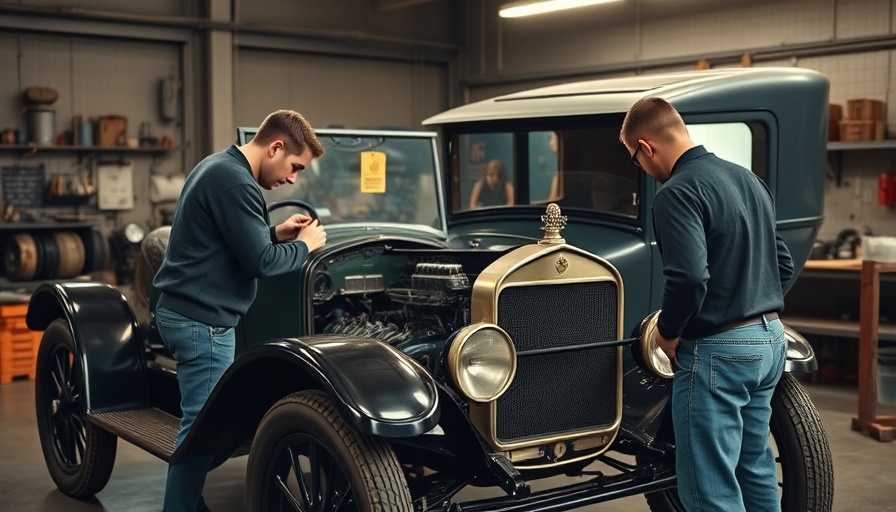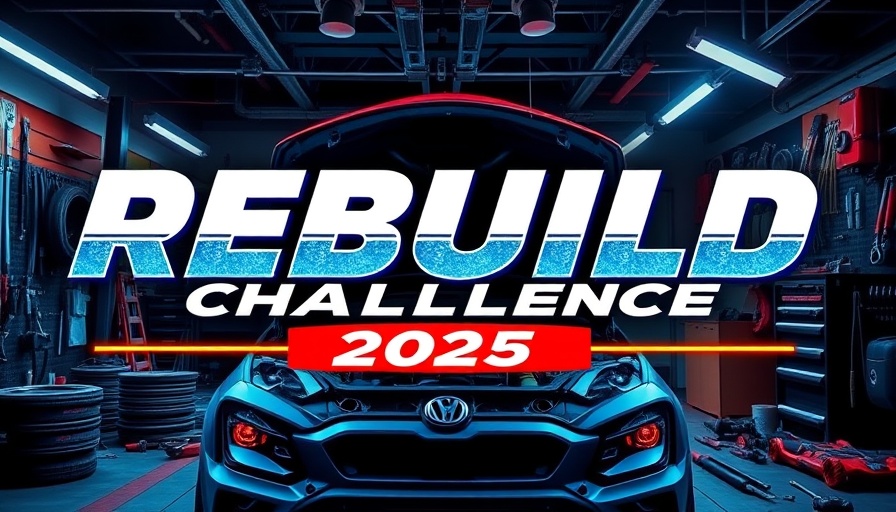
Revving Up History: The Enduring Legacy of the Ford Model T
In the world of automobiles, few vehicles are as iconic as the Ford Model T. Introduced in 1908 and produced until 1927, the Model T didn’t just revolutionize the way Americans traveled; it forged a new era of technological innovation and mass production. Under the guidance of Henry Ford, this automobile was ingeniously designed to be affordable and attainable, allowing the average person to own a car for the first time.
In 'Jay Leno Teaches His Producer How To Drive Ford Model T,' the discussion dives into the intricacies of learning to drive a vintage car, exploring key insights that sparked deeper analysis on our end.
The Model T was affectionately called the "Tin Lizzie," not only for its light weight but also due to its humble offerings that included practicality over luxury. This forward-looking vision was encapsulated by Ford's astonishing offer: the Model T retailed for just $260 at launch, making it accessible to countless families and reshaping American society. Today, it stands as a symbol of engineering prowess and economic opportunity, embodying the essence of an America that was on the move.
Steering through Unfamiliar Territory: Learning to Drive a Model T
The recent episode of "Jay Leno's Garage" features a playful yet insightful segment where Leno guides his producer, David Swift, on how to drive this vintage marvel. The video highlights a crucial point about the Model T's complexity: while cars today boast sophisticated technology and ergonomic designs, the Model T represents an entirely different approach to driving.
The most significant difference? Its unconventional setup of pedals—three instead of just two, and the absence of an automatic transmission. Swift's trial-and-error adventure behind the wheel showcases the steep learning curve inherent to operating such a unique vehicle. drivers in the Model T era had to be more engaged and aware, manipulating the throttle and brake pedal while also managing the handbrake and gear shifts. This hands-on experience contrasts sharply with modern cars, which offer conveniences such as power brakes and automatic transmissions, making Swift's learning experience an engaging journey through automotive history.
Beyond the Pedals: Understanding Model T Mechanics
For those intrigued by the mechanical side of vehicles, the Model T offers a fascinating education in basic car maintenance. As Leno explains to Swift in the video, understanding how to start this car involves a series of steps often absent in today’s vehicles, like manually cranking the engine and adjusting the magneto. This unique approach is not just about nostalgia; it connects drivers to the automotive past and enhances their understanding of mechanical systems.
If you’re considering delving into vintage cars or simply want to become a more informed driver of modern vehicles, knowing the fundamentals of this vehicle’s operation can be immensely beneficial. From the gravity-fed fuel system to the importance of adjusting spark timing, the Model T's mechanics form an enduring foundation for any automotive enthusiast.
Diving into Car Maintenance: Essential Tips for Modern Drivers
While the experience of driving a Model T feels worlds apart from operating contemporary vehicles, the principles of car maintenance remain crucial. Here’s a brief overview of key maintenance tips that echo the thoughtful engineering behind the Model T—ensuring that whatever vehicle you drive runs smoothly:
- Regular Oil Changes: Changing your engine oil is essential for longevity. Aim for every 5,000 to 7,500 miles, adjusting based on driving conditions.
- Tire Rotation: Ensure your tires wear evenly for better performance and safety by rotating them every 5,000 to 7,500 miles as well.
- Fluid Checks: Monitor your vehicle's fluids including coolant, brake fluid, and transmission fluid to prevent overheating and mechanical issues.
- Brake Maintenance: Regularly inspect and replace brake pads and discs as needed—safety first!
- Understanding Filters: Be aware of your vehicle's air and fuel filters, changing them according to your owner’s manual to improve fuel efficiency.
Why Historical Knowledge Matters: The Future of Automotive Culture
As younger generations immerse themselves in digital technology and electric vehicles, the lessons learned from classic cars like the Ford Model T are invaluable. They provide a grounding in understanding how cars were built and designed before the explosion of modern technology. This classical knowledge can significantly enhance appreciation for today’s automotive innovation and inspire new ideas for the future.
Moreover, owning and driving a vintage car can reignite interest and passion in automotive culture, encouraging enthusiasts to share their experiences and knowledge with others. Whether you're behind the wheel of a Model T or the latest electric vehicle, an understanding of automotive history enhances the experience of driving itself.
Embracing the Past to Shape the Future
In conclusion, Jay Leno’s episode featuring the Model T serves as a delightful reminder of our automotive roots. As Leno encourages viewers to appreciate the intricacies of older models, he reflects on a broader theme: that history is not just a collection of dates and facts but a living narrative that shapes the present and future.
Understanding cars like the Model T not only enriches today’s driving experience but also offers insights into car maintenance, community engagement, and the passionate hobby that draws many to the open road. So, as you enjoy your next drive, think about the legacy and learnings of those who drove before you, and consider how these lessons can enhance your experience.
 Add Row
Add Row  Add
Add 




Write A Comment